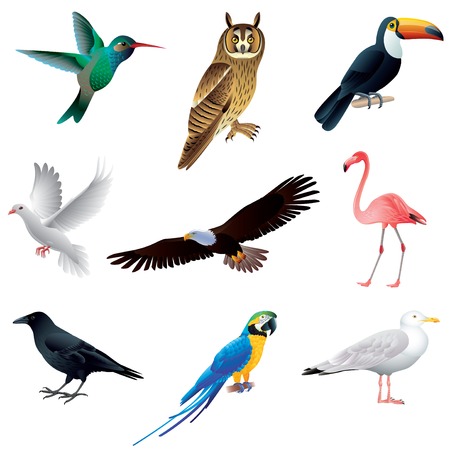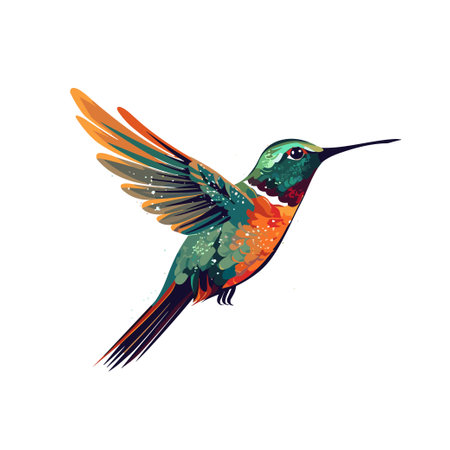Introduction to Urban Fringe Wildlife
The urban fringe, often referred to as the green belt or peri-urban zone, forms a distinctive boundary between Britain’s bustling towns and cities and the surrounding countryside. This transitional landscape is characterised by a mosaic of habitats—hedgerows, scrubland, small woodlands, ponds, grass verges, and even abandoned lots—all interwoven with human development. As urban areas expand, these edges become increasingly significant for both people and wildlife. The urban fringe not only acts as a buffer protecting rural land but also creates unique ecological corridors that allow native species to thrive in proximity to human activity. For nature enthusiasts and casual walkers alike, these areas offer extraordinary opportunities for encountering British wildlife in unexpected settings, making them vital for conservation and community engagement alike.
Common Mammals to Spot
Britains urban fringe offers a unique blend of city convenience and natural habitat, making it a hotspot for observing native mammals. Despite the proximity to human activity, several species have adapted remarkably well to suburban environments. Among these, foxes, hedgehogs, and badgers are perhaps the most iconic. Understanding their habits and preferred settings can significantly enhance your chances of an encounter.
Key British Mammals on the Urban Edge
| Mammal | When to Spot | Where to Look | Observation Tips |
|---|---|---|---|
| Red Fox (Vulpes vulpes) | Dusk & dawn year-round | Parks, gardens, allotments, quiet lanes | Look for movement near bins or along garden fences; listen for barking calls at night. |
| European Hedgehog (Erinaceus europaeus) | Spring to Autumn (hibernates in winter), after dusk | Hedgerows, compost heaps, under dense shrubs | Spot them by rustling sounds; leave out water or specialist food (avoid milk and bread). |
| Eurasian Badger (Meles meles) | Mainly spring & summer, late evening | Woodland edges, grassy banks, large gardens with setts nearby | Watch quietly from a distance; avoid flashlights as badgers are sensitive to disturbance. |
Best Practices for Urban Wildlife Watching
Patience and respect are key when observing these mammals. Foxes are generally bolder and may be seen trotting across streets or scavenging after sunset. Hedgehogs are more elusive but often venture into gardens searching for food; creating small gaps in fences can help them roam safely. Badgers tend to be shy and are best observed near known setts using binoculars from afar. Always avoid leaving out harmful foods or attempting to handle wildlife—observing quietly from a respectful distance ensures both your safety and theirs.

3. Birdlife on the Edge
The urban fringe offers a fascinating haven for bird enthusiasts, blending resident species with seasonal visitors that animate the skies and hedgerows. British towns and cities are fringed by green spaces where one might spot the nimble blue tit darting through suburban gardens, or hear the melodic song thrush proclaiming its territory from a rooftop. These adaptable residents coexist with migratory visitors such as the swift, whose acrobatic flight signals the arrival of summer, and the redwing, flocking in from Scandinavia during the colder months.
Keen birdwatchers should make use of early mornings and late afternoons for observation, when activity is often at its peak. Binoculars and a field guide are essential companions, but patience and quiet movement are equally valuable. Suburban parks, allotments, and river corridors act as vital stopovers and nesting grounds—look out for blackcaps feasting on elderberries or goldfinches balancing delicately atop teasel heads.
For those new to birdwatching on the urban edge, local wildlife groups frequently organise guided walks tailored to varying experience levels. Participating not only sharpens identification skills but also fosters a sense of community among nature enthusiasts. Remember to respect nesting sites and keep a respectful distance to minimise disturbance. With a mindful approach and keen observation, the urban fringe reveals itself as an unexpectedly rich landscape for British birdlife discovery.
4. Amphibians and Reptiles: Subtle Residents
While the British urban fringe is often associated with birds and mammals, it also offers sanctuary to some of the nation’s most understated wildlife: amphibians and reptiles. These creatures are masters of camouflage and discretion, making them less conspicuous but no less important to local ecosystems. For those keen on observing native species, understanding their preferred habitats and behaviours is key.
Native Amphibians: Where Water Meets Land
The UK is home to several amphibian species that can thrive surprisingly close to urban environments. Ponds in parks, allotments, and even garden water features can provide vital breeding grounds for frogs and newts. In early spring, listen out for the chorus of Common Frogs (Rana temporaria) or keep an eye open for the smooth movement of Common Newts (Lissotriton vulgaris) beneath the surface.
Common Urban Fringe Amphibians
| Species | Typical Habitat | Best Time to Spot |
|---|---|---|
| Common Frog | Ponds, damp grassland, gardens | Spring evenings, after rain |
| Smooth Newt | Ponds, wet ditches, allotments | March–June (breeding season) |
| Toad | Woodland edges, compost heaps | Dusk from March onwards |
Reptilian Residents: Britain’s Elusive Cold-blooded Wildlife
Reptiles are less commonly seen in densely populated areas but can be encountered on the outskirts where grasslands meet scrub or brownfield sites. The Slow Worm (Anguis fragilis)—a legless lizard rather than a true worm—is frequently found under logs, stones or discarded roofing felt where warmth accumulates. Grass Snakes (Natrix helvetica) may visit garden ponds in search of amphibian prey during warmer months.
Tips for Responsible Observation
- Avoid disturbing habitat piles or turning logs unnecessarily.
- If you spot a reptile basking, observe quietly from a distance.
- Leave water sources accessible for amphibians during dry spells.
- Participate in local wildlife surveys to help monitor populations.
Cultural Note: Conservation Matters
In Britain, all native amphibians and reptiles are protected by law. It is illegal to harm or remove them from the wild without appropriate permissions. Urban fringe habitats play a crucial role in supporting these subtle residents—by respecting their space and advocating for green corridors, we ensure future generations can enjoy these fascinating encounters on our doorsteps.
5. Insects and Invertebrates: The Overlooked Majority
When considering wildlife encounters on the urban fringe, attention is often drawn to mammals or birds, yet insects and invertebrates represent the true backbone of these ecosystems. The edges of British towns and cities are teeming with a remarkable diversity of small creatures that play pivotal roles in maintaining ecological balance. These species often go unnoticed, but their contributions to pollination, decomposition, and as a food source for larger animals are indispensable.
Butterflies: Urban Fringe Jewels
British urban fringes provide vital habitats for several butterfly species, including the Small Tortoiseshell (Aglais urticae) and the Common Blue (Polyommatus icarus). These insects rely on wildflowers and untamed patches of nettles or grasses that frequently flourish along railway lines, disused allotments, and neglected corners of parks. Their presence not only adds vibrancy to city edges but also indicates healthy local biodiversity.
Bees: Unsung Pollinators
Wild bees—such as the Buff-tailed Bumblebee (Bombus terrestris) and Red Mason Bee (Osmia bicornis)—are crucial allies in both natural and cultivated landscapes. On the urban fringe, they exploit gardens, hedgerows, and brownfield sites for nesting and foraging. Without these industrious insects, many native plants and even common garden crops would struggle to reproduce, making bees essential partners in supporting urban green spaces.
Beetles and Other Invertebrates: Nature’s Workforce
The humble beetle population—from Ladybirds (Coccinellidae) that control aphid numbers to Stag Beetles (Lucanus cervus) found in decaying wood—demonstrates the importance of overlooked habitats like log piles or compost heaps on the city’s edge. Spiders, earthworms, and woodlice further contribute by aerating soil and recycling organic matter, underpinning the productivity of both wild margins and suburban gardens alike.
Recognising the value of these often-overlooked creatures is essential for any urban explorer or community leader committed to conserving Britain’s unique edge-of-city ecosystems. By fostering environments where insects and invertebrates can thrive—whether through wildflower planting or simply leaving areas undisturbed—we strengthen the resilience of the entire urban fringe wildlife network.
6. Responsible Wildlife Watching Etiquette
Observing wildlife on the urban fringe is a rewarding experience, but it also comes with responsibilities. As British species increasingly share space with expanding towns and cities, adopting respectful watching practices is vital to safeguard both animals and their habitats. Below are essential guidelines for ensuring minimal disturbance and actively supporting local conservation efforts.
Keep Your Distance
Always maintain a respectful distance from any wildlife you encounter. Use binoculars or cameras with zoom lenses to observe animals without causing stress or altering their natural behaviour. Avoid approaching nests, dens, or resting spots, particularly during breeding seasons, as disturbance can lead to nest abandonment or increased predation risk.
Stick to Paths and Marked Routes
Stay on designated footpaths and trails wherever possible. This helps protect sensitive habitats, such as wildflower meadows or hedgerows, from trampling and reduces the risk of disturbing ground-nesting birds or small mammals. Urban fringe areas often have clearly marked routes—respect these boundaries for the benefit of both wildlife and fellow walkers.
Keep Noise Levels Low
Wildlife is easily startled by sudden movements or loud noises. Speak quietly, move slowly, and switch mobile phones to silent mode when in proximity to nature hotspots. If walking in groups, encourage everyone to be mindful of their volume so as not to disrupt animal routines.
Leave No Trace
Take all litter home, including biodegradable waste like fruit peels or sandwich crusts, which can attract pests or harm local fauna. Refrain from feeding wild animals—while well-intentioned, human food often proves detrimental to their health and may alter natural foraging behaviours.
Promote Conservation Through Observation
If you spot rare or protected species on the urban fringe, consider submitting your sightings to local wildlife trusts or citizen science projects. These records help conservationists monitor populations and plan future protection measures. By following these simple yet crucial etiquette guidelines, every encounter becomes an opportunity to foster respect for nature and support the long-term wellbeing of Britain’s remarkable urban-edge wildlife.
7. Getting Involved: Citizen Science and Local Initiatives
Connecting with wildlife on the urban fringe is not just a matter of observation—its an opportunity to contribute actively to conservation efforts. Across the UK, citizen science projects and local volunteering initiatives empower individuals to play a pivotal role in protecting native species and their habitats. Whether you are a seasoned naturalist or a newcomer inspired by your first hedgehog sighting, there are numerous ways to make a tangible impact.
Citizen Science: Monitoring British Wildlife
Citizen science projects invite members of the public to collect valuable data on local species. Programmes such as the RSPB’s Big Garden Birdwatch, Butterfly Conservation’s Big Butterfly Count, and Mammal Society’s Mammal Mapper app rely on everyday observations to track population trends and inform conservation strategies. These initiatives are designed for accessibility; participants can contribute from their own gardens, local parks, or even urban streets—making them ideal for those living near city boundaries.
How to Get Started with Citizen Science
- Register for national surveys through reputable organisations such as the Wildlife Trusts, RSPB, or British Trust for Ornithology.
- Download apps or use online portals to record sightings of birds, mammals, insects, and plants.
- Share findings with community groups or social media using designated hashtags to help raise awareness.
Local Volunteering Opportunities
For those looking to engage more deeply, volunteering with local wildlife groups offers hands-on experience and direct involvement in habitat management. Many councils and charitable organisations coordinate regular activities such as habitat restoration, litter picking, pond maintenance, and guided nature walks. Not only do these roles support biodiversity, but they also foster community spirit and provide opportunities for outdoor learning.
Finding a Volunteering Role Near You
- Contact your nearest Wildlife Trust or check their website for upcoming events.
- Join local Friends of Parks groups or environmental charities operating in your borough.
- Attend workshops and training days offered by conservation bodies to develop new skills relevant to urban wildlife care.
By participating in citizen science and volunteering locally, individuals can become stewards of the urban fringe—helping ensure that iconic British species continue to thrive alongside our growing cities. These collective efforts form the backbone of successful urban conservation across the UK.


